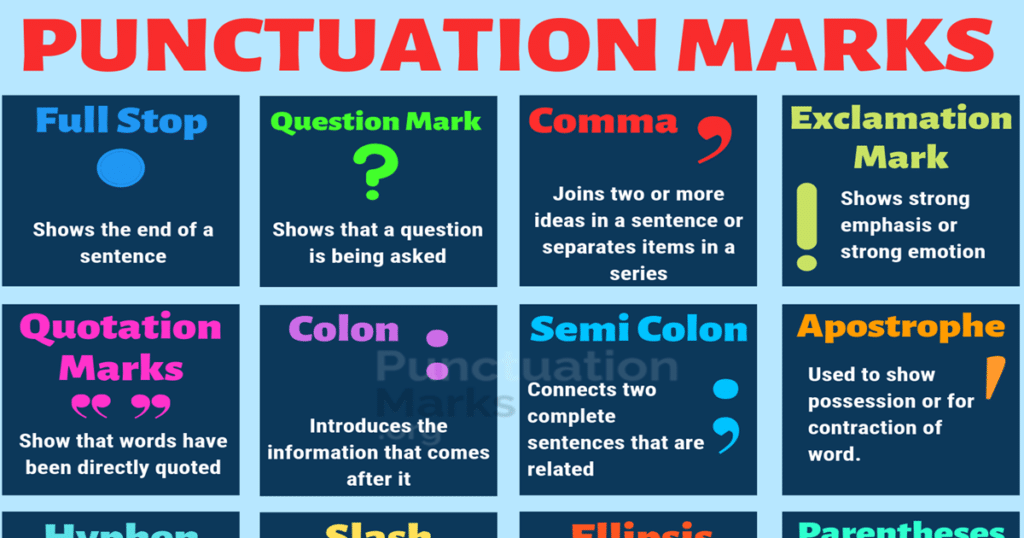Punctuation marks are essential in writing as they help to convey meaning, clarify sentences, and indicate pauses. They play a crucial role in ensuring that the text is clear, coherent, and easy to read. Without proper punctuation, sentences can be confusing and difficult to understand.
There are several types of punctuation marks, each serving a specific purpose. From periods to question marks, commas to exclamation points, these marks help to organize and structure sentences effectively.
Examples of Punctuation Marks:
1. Period (.) – The period is used to indicate the end of a sentence. It is placed after a statement or declarative sentence. For example, “I went to the store.”
2. Comma (,) – Commas are used to separate items in a list, join independent clauses in a compound sentence, and set off introductory elements. For example, “I need to buy apples, oranges, and bananas.”
3. Question Mark (?) – The question mark is used to indicate a direct question. For example, “Where are you going?”
4. Exclamation Point (!) – The exclamation point is used to express strong emotion, surprise, or emphasis. For example, “I can’t believe it!”
5. Quotation Marks (” “) – Quotation marks are used to indicate direct speech, dialogue, or to enclose the titles of articles, poems, or short stories. For example, “She said, ‘Hello!'”
Punctuation marks are essential in ensuring that writing is clear, concise, and easy to understand. They help to convey meaning, indicate pauses, and structure sentences effectively. By using punctuation marks correctly, writers can enhance the readability and coherence of their text.
